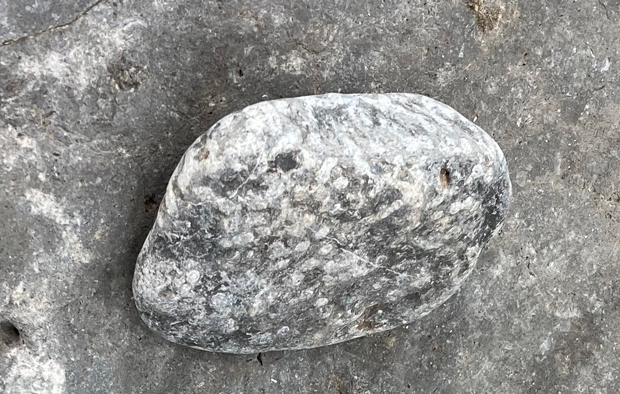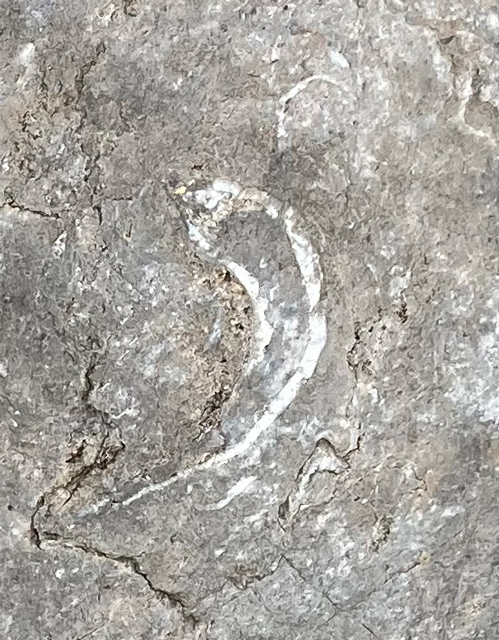The picturesque Red Wharf Bay on the eastern coast of the isle of Anglesey is often visited by geology students. The rocks surrounding the bay provide evidence of changing sea levels from the Carboniferous. Rounded pebbles part of the way up one of the cliffs provide evidence of a much more recent change in sea level. The weather-worn and eroded rocks represent a raised beach, geological proof of sea levels being much higher during interglacial intervals (Pleistocene Epoch).
The views are fairly spectacular too.

Picture credit: Everything Dinosaur
Carboniferous Limestones
The limestones that make up the cliffs were deposited around 330 million years ago during the Serpukhovian stage (the youngest stage of the Mississippian, the lower subsystem of the Carboniferous). The area is dominated by the huge Castell Mawr (Castle Rock), the limestone was quarried for many years, but all quarrying has been abandoned and the area is now a haven for nesting seabirds.
The bay attracts a variety of birds, as well as the ubiquitous gulls, many different types of wading bird can be found in this area including oystercatchers, sandpipers and curlews. Occasionally, visitors to this part of Anglesey can be treated to a view of a Little Egret (Egretta garzetta) hunting for fish as the tide comes in.
This area of outstanding natural beauty is famous for its geology, the limestone was formed in a shallow, tropical sea, but the presence of sandstone indicates that the sea retreated and the sandstones represent estuarine and river channels that criss-crossed the area, with the sand infilling the limestone as it was partially dissolved away.
Fossils can be found, but they are relatively rare. Brachiopod traces can be seen in the limestone rocks that litter the beach, a testament to the rich marine life that thrived in this area during the Carboniferous.

Picture credit: Everything Dinosaur
Occasional Corals Found in Pebbles
Walkers, if they descend onto the beaches from the Welsh Coastal Path can find the occasional fossil of colonial corals in pebbles scattered along the beach. They are rare and difficult to differentiate from the limestones and other material on dry, sunny days, but with patience the fossil collector can be rewarded with some finds, albeit highly eroded specimens.

Picture credit: Everything Dinosaur
Whilst sunny weather can never be guaranteed in North Wales, Red Wharf Bay is a family friendly beach close to beautiful countryside with stunning views which even on Bank Holidays is never overcrowded. It also provides the opportunity to spot a fossil or two.

Picture credit: Everything Dinosaur
Visit the award-winning Everything Dinosaur website: Prehistoric Animal and Dinosaur Models.






Leave A Comment